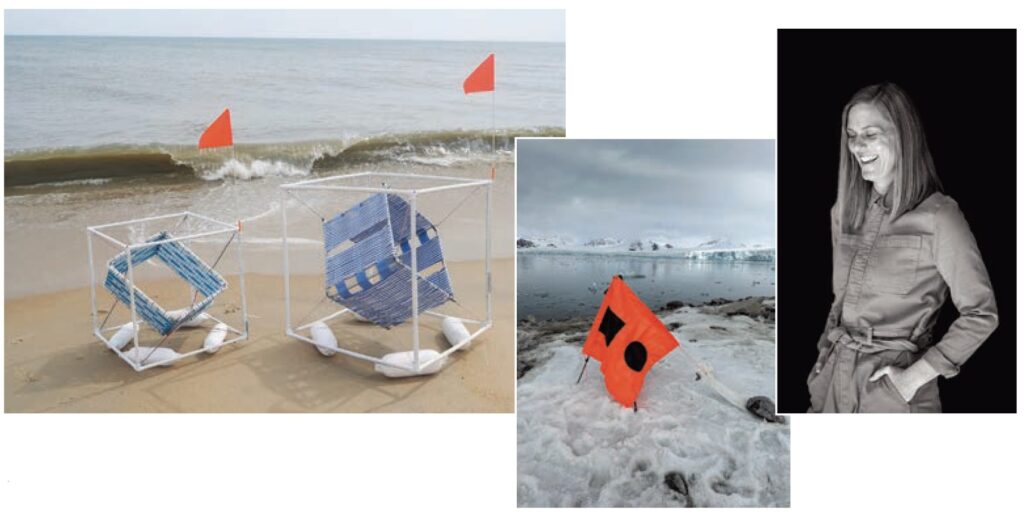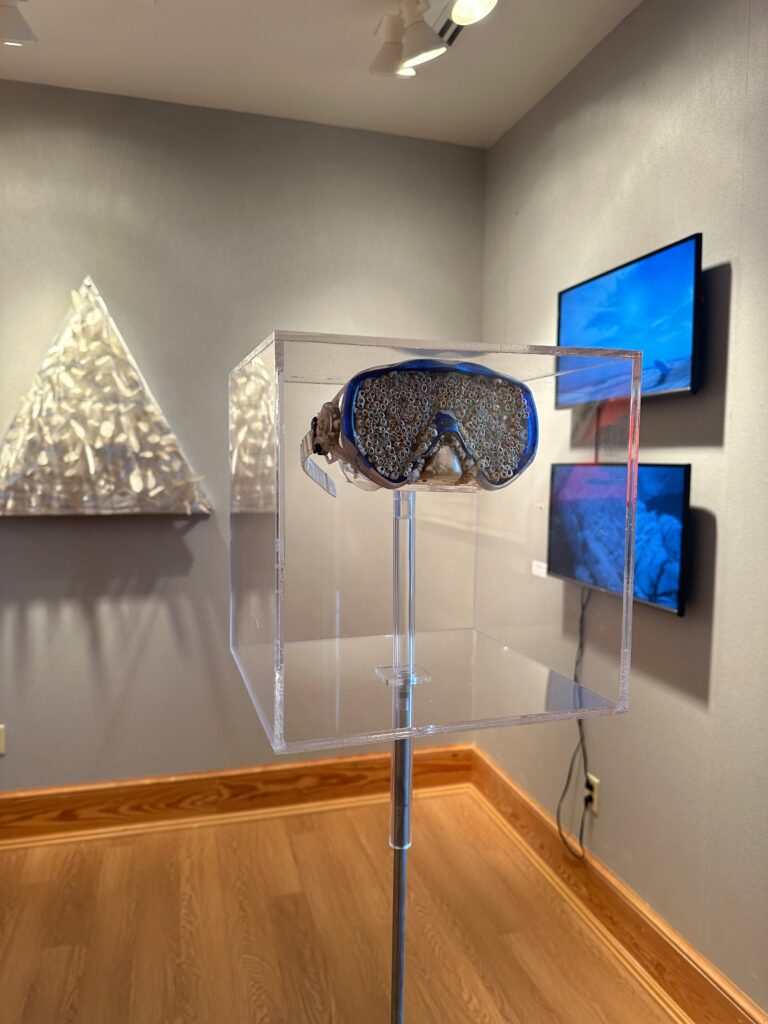ART OF THE STATE

Earth Is at the Center
Christina Lorena Weisner’s art explores new frontiers
By Liza Roberts
Christina Lorena Weisner’s art emerges from her deep connection to the earth, to its systems and rhythms, its elements and mysteries. She studies the planet like a scientist and discovers it like an explorer, venturing to its far ends to record its extremes in person, to live within its phenomena. She turns her insights into art she hopes will inspire awe for our planet’s grandeur and empathy for its vulnerability.
Her latest fascination is the North Pole, where she spent two weeks immersing herself last spring with an expeditionary art and science residency called The Arctic Circle. “I can only describe it as the most impactful experience of my life,” Weisner says. “I’ve been interested in water for a long time, and I wanted to immerse myself into this landscape of glaciers in order to better understand it.”
The expedition’s ship, which carried 30 fellow resident artists and scientists, took Weisner and others to the Svalbard Archipelago by outboard Zodiacs twice a day, always surrounded by “a triangulation of guards with guns” to protect them against polar bears. While ashore, Weisner planted an orange safety flag in the icescape, making it a recurring motif in her photos. She also used a drone to shoot video from above and collected plastic.
“You’re in a land that you know is changing, you’re looking at a glacier that might not be there in 100 years. You’re looking at history,” she says. That history was evident in other ways, too, like a massive pile of whale bones left behind by 19th century whalers, and the detritus left behind by scientific explorers of that time. “There were many instances where I was thinking of human history as it relates to geological time,” Weisner says.
The trip “was the catalyst for a whole new body of work,” says Weisner, who is headed back next May. That work includes still photography of that mythic frontier, sweeping video and installations that incorporate pieces of plastic she collected in and around Svalbard.
Recently, her work was in Surface and Undercurrents, a group show at Dare Arts in Manteo, and this month she is part of a group exhibit at Emerge Gallery & Art Center in Greenville. Next April she will be featured in a group show at Central Connecticut State University on climate change in the Arctic, and in June her work will be exhibited in a solo show at the Museum of Contemporary Art in Arlington, Virginia.
A native of Richmond, Virginia, Weisner says she can trace the beginnings of her work as an artist to a job she had with Nag’s Head Ocean Rescue in her early 20s. When she wasn’t saving swimmers, she stared out at the ocean for 10 hours a day. “I would watch the sun move across the sky and the moon come up,” she says. “I was very aware of these bigger processes — these large-scale movements, like waves coming over from the coast of Africa — that we’re not often aware of.
Other little-seen influences in her work come from her wide-ranging education, which includes an MFA from University of Texas at Austin and separate undergraduate degrees in both world studies and fine arts from Virginia Commonwealth University. The interplay between humans, time and the planet has long been a theme in her work. As a former competitive swimmer and regular runner and biker, she experiences the world in a visceral way, creating art that is informed by the way we live within the world and the way the world lives with us.
From her home in Kitty Hawk (she’s soon to move to Duck, two Outer Banks towns away), Weisner rides a bike or runs along the beach every day to note its transformations. “It’s the same beach, but it’s completely different, the water color, the form of the waves, the temperature of the wind,” she says. Sometimes she finds objects to incorporate into sculpture as she goes.
Waves and wavelengths — audio, seismic and light — all inspire her. A meteorite impact crater in Southern Germany was the subject of sculpture and installation art she created with the Fulbright Grant she was awarded in 2013; she used seismometers to record earthquakes as part of a Mint Museum installation in 2018.
One early morning in March 2022, I had the chance to witness her in action. On the shores of Kitty Hawk Sound, I watched as she zipped up her wetsuit, assembled a series of floating sculptures, and waded with them into the frigid waters. The sun wasn’t fully up, the air was barely 40 degrees and the art she was wrangling was bigger than she was. Weisner took it all in stride. In a matter of minutes, she’d glided 50 yards from shore and her art was floating all around her.

The largest of the three pieces of art with her that morning was one she’d attached to her outrigger kayak and towed 275 miles down parts of the Eno and Neuse Rivers and through the Ocracoke Inlet in 2019, recording audiovisual information and environmental data (including a panther sighting) along the way. Two smaller works included discarded beach chairs from one of her regular oceanside jogs.
Her approach with every subject, Weisner says, is to embrace what she doesn’t know, and to let her new knowledge as well as her material guide her.

“I’m still a process-oriented artist,” she says, one focused on “openness to material and play, not taking my work too seriously . . . and not being too pigeonholed.” She thrives when she can employ all of her senses in the making of her art, especially work that involves nature. And she loves making connections across time and place.
When the polar vortex winds of 2022 washed an old canoe up on the side of the road near her house, for instance, she picked it up and brought it home. “It had beautiful layering on it,” she says. “The water had rotted holes into it. I think it had been submerged in the sound for a couple of years.”
The fact that winds from the Arctic dislodged it and brought it to her North Carolina shore fascinated her, she says, and that canoe has become part of her latest Arctic-inspired installations. “No place is an isolated place,” says Weisner. “Everything we do — everything that happens in one geographic location — impacts other geographic locations.”
